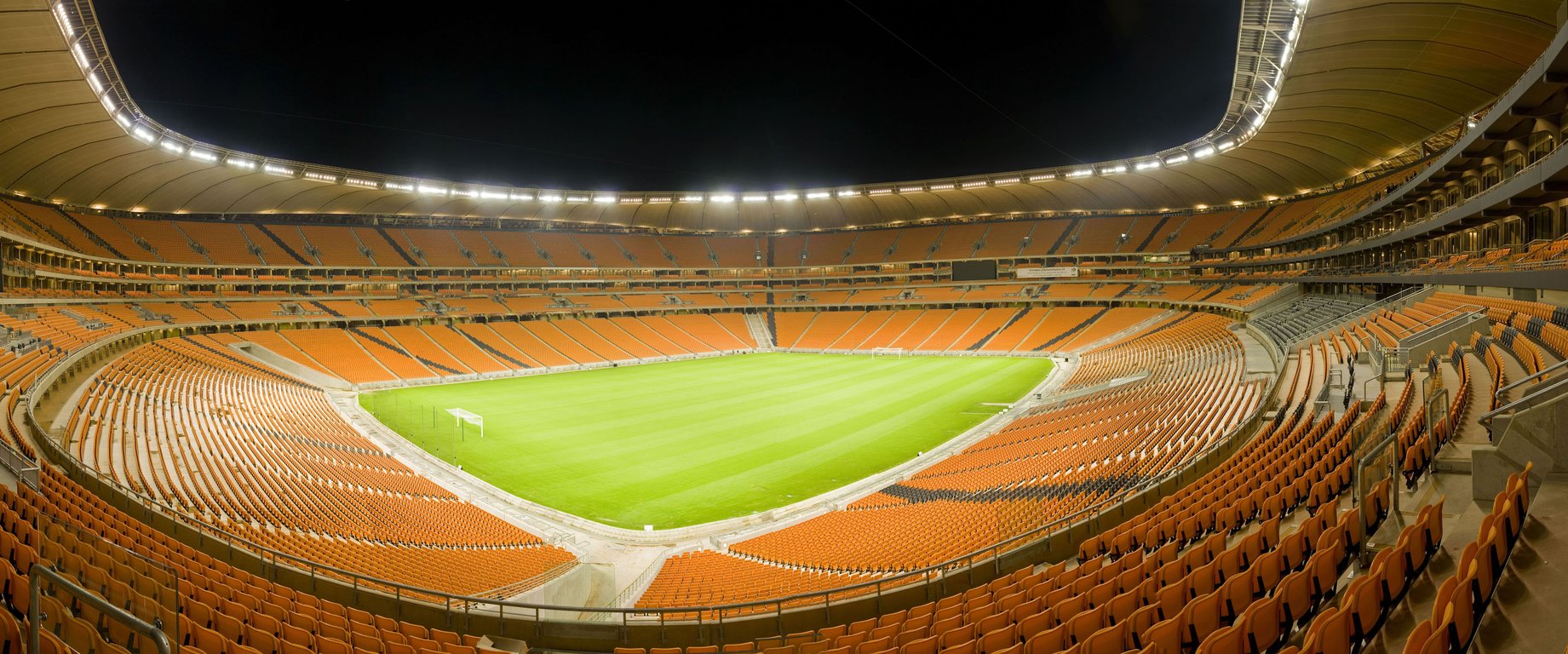Some of the biggest soccer stadiums in the world have been built with public funds. They are typically the home of national soccer teams but they are also used for multiple other events such as club soccer matches as well as concerts.
Many of these stadiums have been built in times when safety concerns such as evacuation routes were a bit more relaxed.
Historically, many of these stadiums have seen seat capacity reduction due to changing or evolving safety standards. This is also why many of these stadiums listed below have been even bigger in the past.
But even by today’s standards, the biggest soccer stadiums in the world impress even those outside of the sporting world.
Table of Contents
The Biggest Soccer Stadiums in the World
| Number | Stadium | Country | Seats |
|---|---|---|---|
| 1 | Rungrado 1st of May Stadium | North Korea | 150,000 |
| 2 | Camp Nou | Spain | 99,000 |
| 3 | FNB Stadium | South Africa | 94,000 |
| 4 | Wembley | England | 90,000 |
| 5 | Estadio Azteca | Mexico | 87,000 |
| 6 | Borg El Arab Stadium | Egypt | 86,000 |
| 7 | Westfalenstadion | Germany | 80,000 |
| 8 | Stade de France | France | 80,000 |
| 9 | Santiago Bernabeu | Spain | 80,000 |
| 10 | San Siro | Italy | 75,000 |
1. Rungrado 1st of May Stadium, North Korea: 150,000 seats

With 150,000 seats, this stadium is the biggest in the world and is the home of North Korea’s national soccer team.
This stadium also hosts multiple yearly events such as athletic competitions or various festivals. Because it is located in North Korea, this stadium remains mysterious to much of the Western world.
It is believed that this large stadium hosts various political events, as well. It’s no wonder given its large size – its roof sits more than 60 meters above ground level.
2. Camp Nou, Spain: 99,000 seats
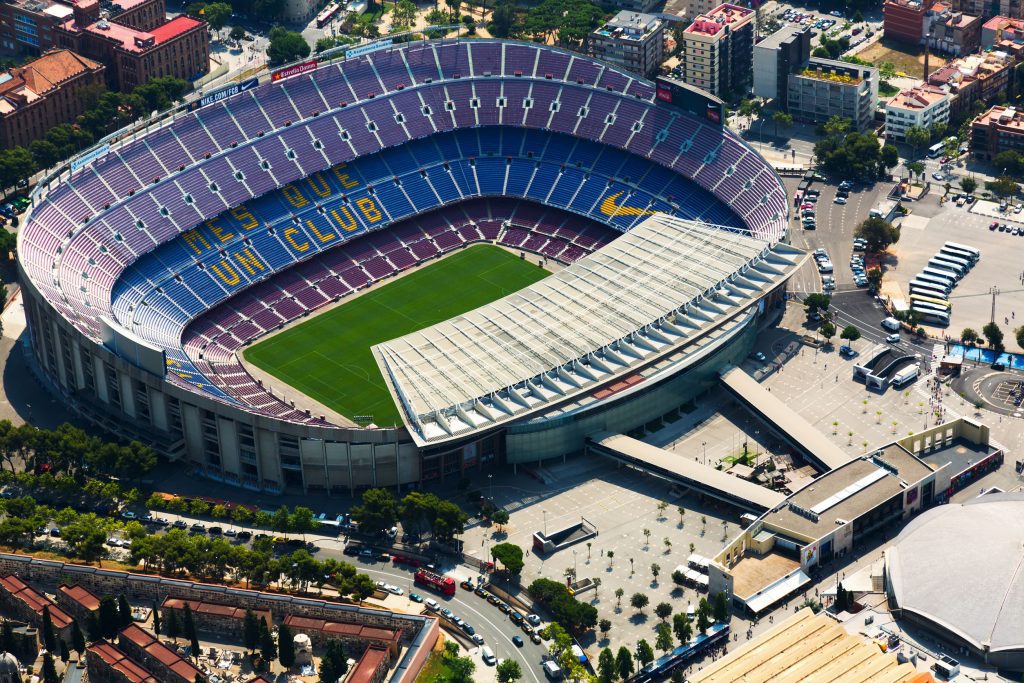
With 99,000 seats, Camp Nou is the biggest stadium solely dedicated to soccer. It hosts FC Barcelona, and it is one of the most important venues you need to visit as a soccer fan.
It has been open to the public since 1957 and, because of its age, its architecture now looks a bit outdated.
However, this oval stadium was consistently selling out in home FC Barcelona matches before the pandemic. It has also hosted several concerts for the residents of Barcelona.
3. FNB Stadium, South Africa: 94,000 seats

Known as “The Calabash,” this stadium is the biggest in Africa. It’s the home ground for South Africa’s national soccer team and was part of the 2010 World Cup.
The stadium saw clashes between South Africa and Mexico and also hosted one of the most interesting soccer matches in history, Uruguay versus Ghana.
This 94,000-seat stadium has also hosted the final match of that event between Spain and the Netherlands.
4. Wembley, England: 90,000 seats
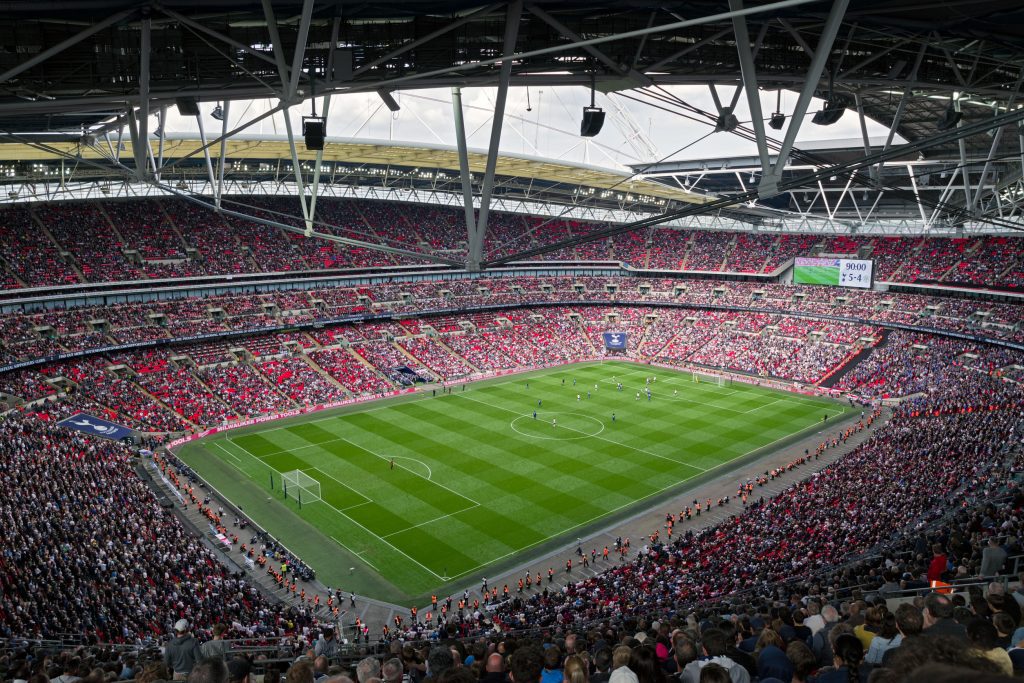
Wembley is considered by many to be the most important stadium in soccer history. It is the home of an entire nation of soccer lovers and England’s national soccer teams.
It has been completely rebuilt and it now has some of the most modern facilities of any stadium.
Even the underground stations close to the stadium have been considerably expanded to allow fans easy access to the soccer grounds.
5. Estadio Azteca, Mexico: 87,000 seats

Estadio Azteca is another important venue in the history of soccer. It comes with a capacity of around 87,000 seats and it is the home of Mexico’s national soccer team.
This stadium has also seen some of the most successful world cups. It has been an official venue at the 1970 FIFA World Cup as well as at the 1986 FIFA World Cup.
It was the place of the famous “Hand of God” goal scored by Maradona. In 1968, Estadio Azteca also hosted a large sporting event – the Summer Olympics.
6. Borg El Arab Stadium, Egypt: 86,000 seats
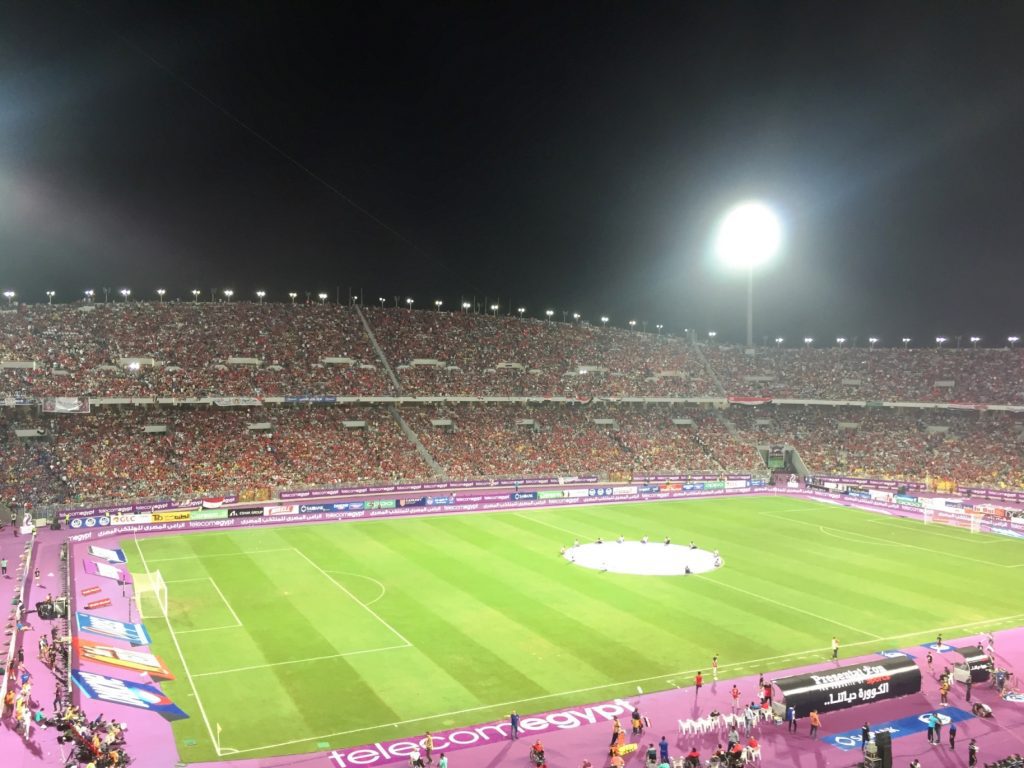
Borg El Arab Stadium has 86,000 seats, is Egypt’s biggest soccer stadium, and was only constructed a few years ago.
It features a running track since it also hosts other sporting events besides soccer.
This stadium comes with no roof and watching a game here in the high summer heat might not be easy.
7. Westfalenstadion, Germany: 80,000 seats
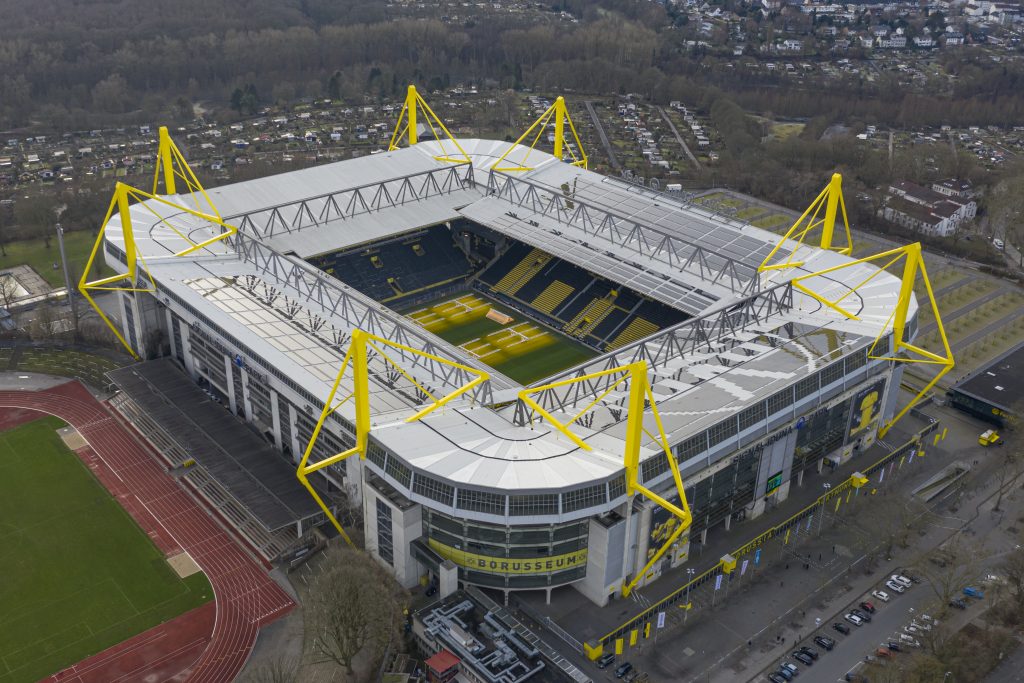
This large stadium also has a seating capacity of over 80,000 seats. In the days before strict safety measures, this stadium often exceeded that capacity.
This stadium has a historic role in Germany’s soccer scene, as this small team often clashes with the largest soccer teams in the country, such as Bayern Munich.
8. Stade de France, France: 80,000 seats
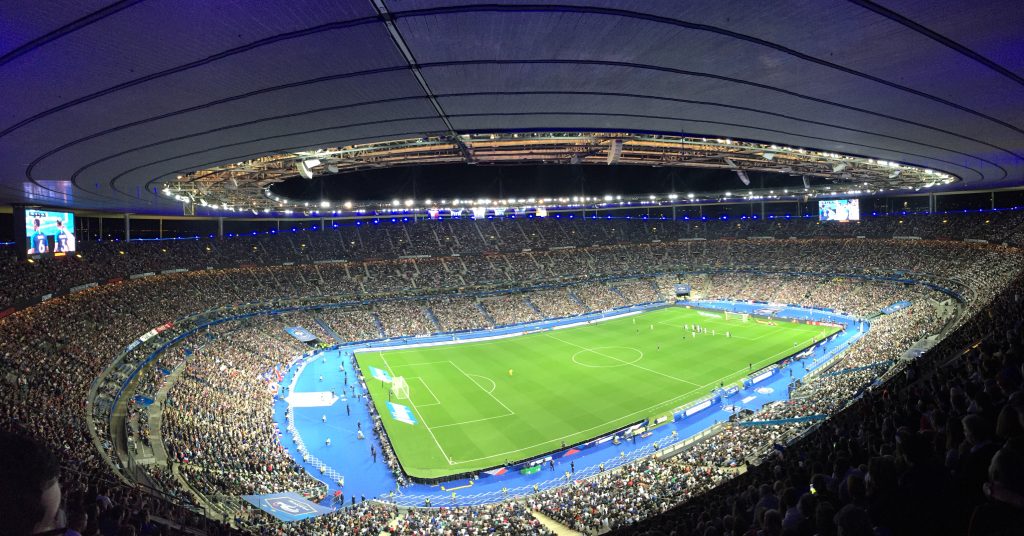
Stade de France is the soccer stadium for France’s national soccer team. It has a capacity of over 80,000 seats and it enjoys easy access from the French capital.
The stadium features a larger round roof that covers most of its seats, which makes it a good stadium for watching matches when the weather isn’t perfect.
Historically, the stadium has seen many soccer matches with top French players such as Zinedine Zidane or Didier Deschamps.
9. Santiago Bernabeu, Spain: 80,000 seats

With a capacity of over 80,000 seats, the royal stadium of Madrid is the home of Real Madrid. It has seen a record attendance of more than 125,000 people.
This stadium has also hosted some of the biggest clashes in soccer history and has been the home of top soccer players such as Ronaldo, Zidane, and Beckham.
The stadium enjoys easy access from any part of Madrid and internationally through the Madrid Airport. It’s currently closed due to the pandemic.
10. San Siro, Italy: 75,000 seats
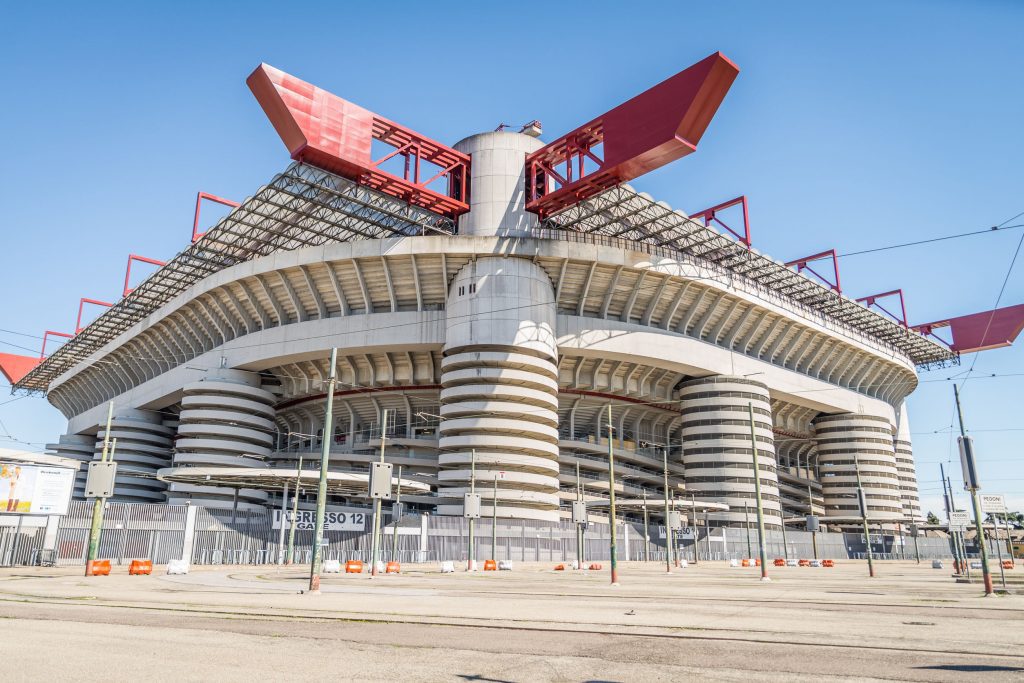
San Siro was inaugurated a long time ago. Receiving its first visitors in 1925, San Siro is one of the oldest soccer stadiums in the world and will turn 100 in not too long.
This stadium has seen one of the earliest editions of the World Cup. With a capacity of 75,000 seats, it has hosted games from the 1934 World Cup as well as games from the 1990 FIFA World Cup.
Today, it is the home of both AC Milan and Inter Milan.

